CRAZY EASY HOMEMADE ARTISAN BREAD {ONLY 4 INGREDIENTS!}
CRAZY EASY HOMEMADE ARTISAN BREAD {ONLY 4 INGREDIENTS!}
In today’s post: You won’t believe how easy it is to make this beautiful homemade artisan bread! Only 4 ingredients and about 5 minutes of hands-on time for a gorgeous loaf that looks like it came from a bakery. Perfect for beginners!
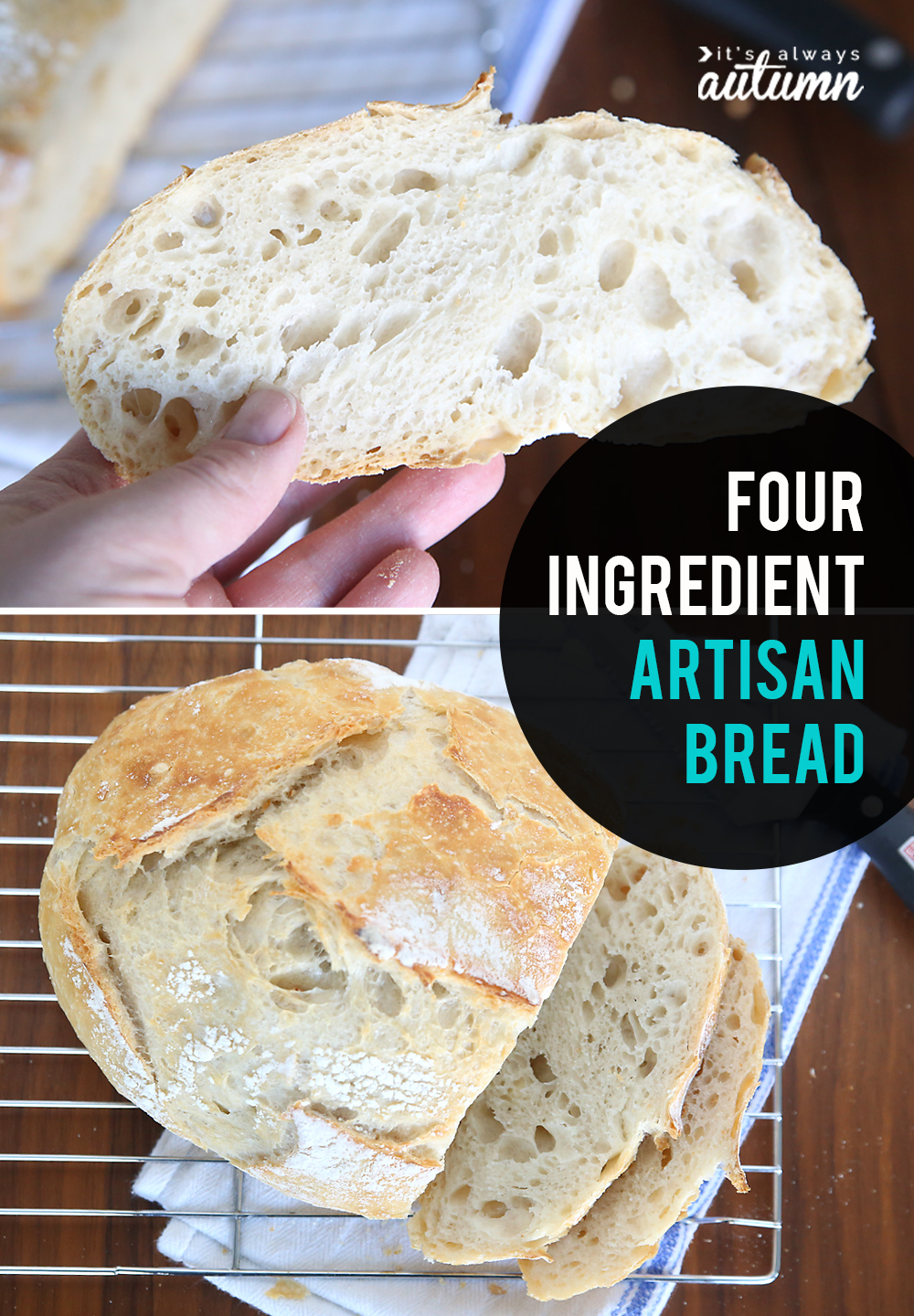
You’ve probably seen loaves like this at your local bakery, often referred to as a “boule”. The outside is crusty and chewy, while the inside is soft and tender. It’s perfect for serving alongside soup, with a creamy dip, or for making hearty sandwiches.
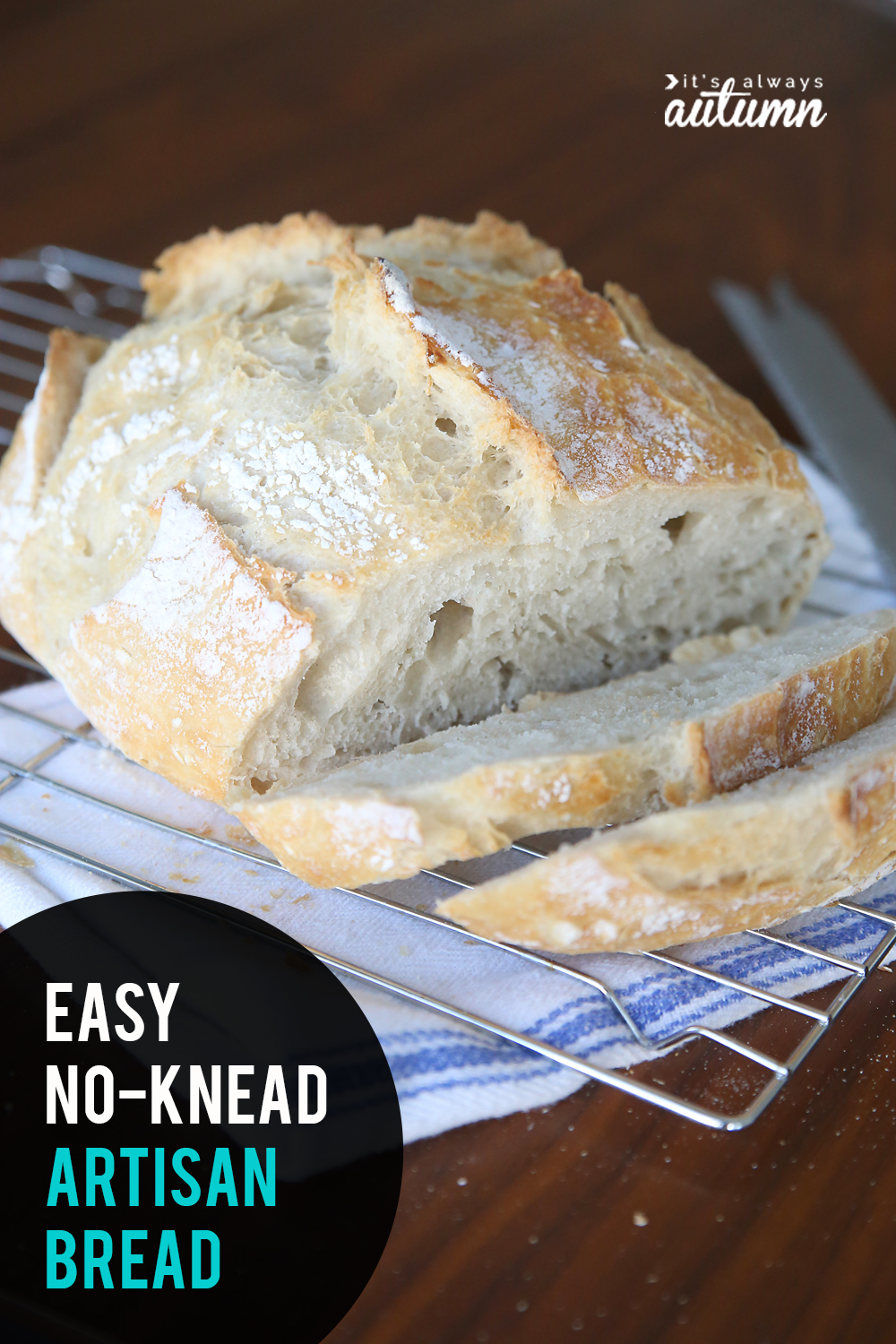
The secret to this incredible artisan bread is a long rise time, so you do have to plan ahead. The nice part is that the dough can rise anywhere between 8 and 24 hours, so it’s very flexible. You can start it the night before you plan to serve, or in the morning before work, and either way it will still turn out great! There is very little hands-on time so I find it’s a lot easier to make on a busy weekday than a traditional loaf.
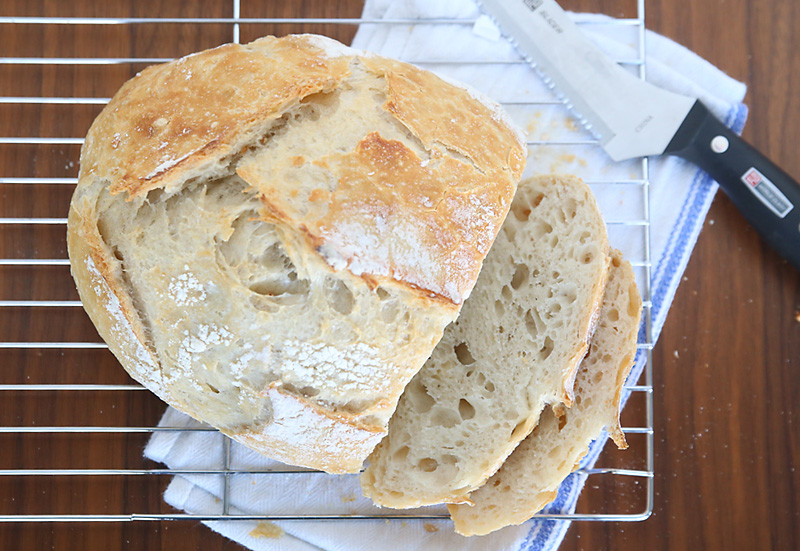
Plus it just looks fancy, which is fun.
HOW TO MAKE ARTISAN BREAD
ETA: After lots of happy comments, and lots of questions as well, I decided to make a step-by-step video for you guys showing the entire process for making artisan bread.
CRAZY EASY HOMEMADE ARTISAN BREAD {ONLY 4 INGREDIENTS!}
In today’s post: You won’t believe how easy it is to make this beautiful homemade artisan bread! Only 4 ingredients and about 5 minutes of hands-on time for a gorgeous loaf that looks like it came from a bakery. Perfect for beginners!
Ok, people, I know that baking bread can be intimidating. There’s mixing and kneading and rising and it seems like it’s going to take forever and have a high chance of failure. If you’ve ever thought: “I just can’t make bread” then this easy artisan bread recipe is for you! Seriously, I can’t overstate how simple this recipe is and how beautifully the loaf turns out. Four ingredients, five minutes of work, and no kneading and this is what you’re going to be serving with dinner:

You’ve probably seen loaves like this at your local bakery, often referred to as a “boule”. The outside is crusty and chewy, while the inside is soft and tender. It’s perfect for serving alongside soup, with a creamy dip, or for making hearty sandwiches.

The secret to this incredible artisan bread is a long rise time, so you do have to plan ahead. The nice part is that the dough can rise anywhere between 8 and 24 hours, so it’s very flexible. You can start it the night before you plan to serve, or in the morning before work, and either way it will still turn out great! There is very little hands-on time so I find it’s a lot easier to make on a busy weekday than a traditional loaf.

You’ll start by mixing 3 cups white flour, 1 teaspoon salt, 1/2 teaspoon yeast, and 1.5 cups of warm water in a bowl.
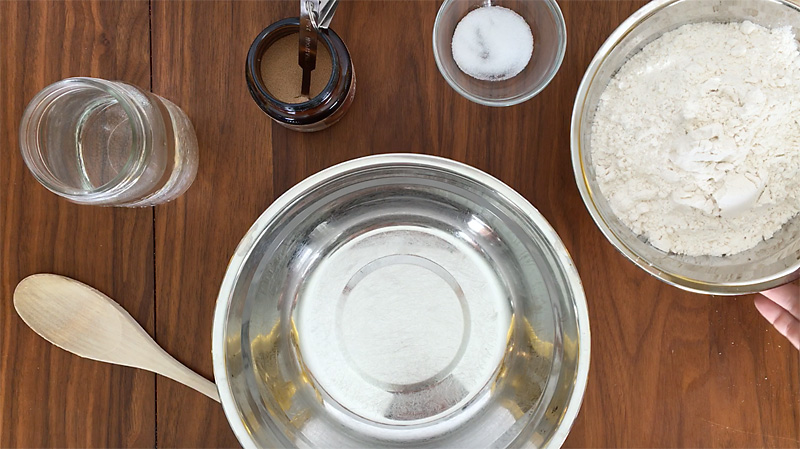
Use a wooden spoon and just mix until everything’s combined, probably less than a minute. No kneading, and no worries it if looks like a shaggy mess. It’s ok.
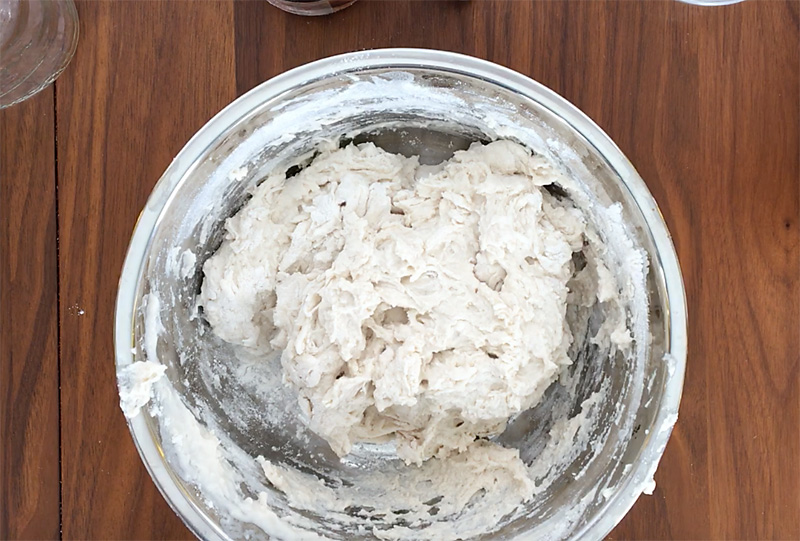
Cover with plastic wrap and leave at room temperature for 8-24 hours. It will get all bubbly.
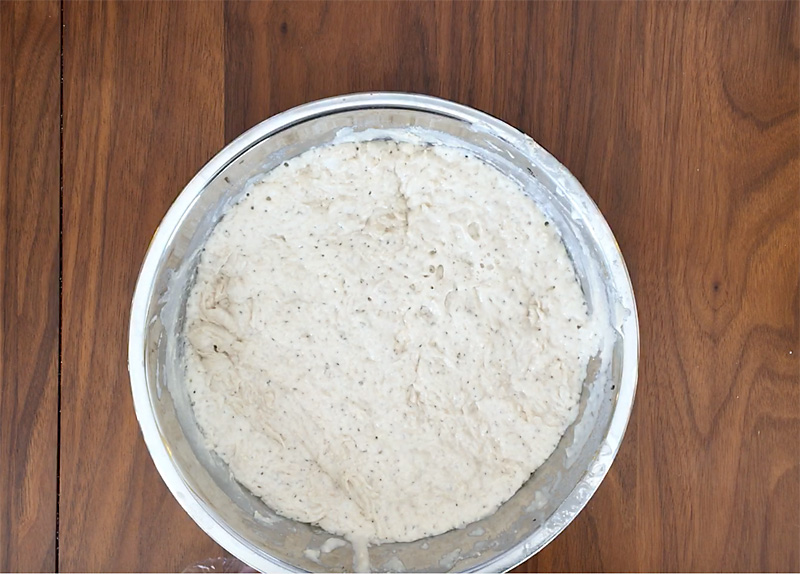
About 90 minutes before you’d like to serve it, turn the dough out onto a well-floured surface. Form it into a ball (as shown in the video), and let it rest for 30 minutes.
NOTE: Some readers tell me they form the ball on a piece of parchment paper, and then drop the whole thing (dough and paper) into the baking dish to cook. This makes the transfer even simpler!
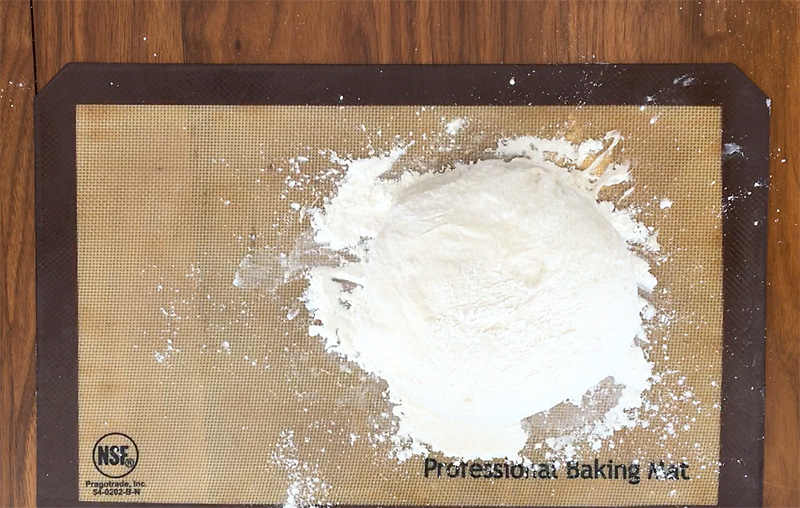
In the meantime, turn on the oven to 450 degrees and put whatever dish you’ll cook it in inside the oven to preheat. You can use a dutch oven, or the crock from your slow-cooker, or a casserole dish with high sides, or an oven safe pot…pretty much anything that’s oven safe and has high sides will work. I just ordered this very pretty enameled dutch oven and it works beautifully (affiliate link)! NOTE: A couple of readers have let me know that their crock cracked from the heat in the oven. I have used mine multiple times and it has been fine, but I’d hate for anyone to ruin their crock on my advice! So use a crock at your own risk.
After dough has rested and oven has preheated 30 minutes, use a sharp knife to slash an X across the top of the dough. Spray your baking dish with nonstick spray, pick up the dough with floured hands, and plop it in. Cover the dish with a lid or aluminum foil, and put it in the oven.
Bake covered for 30 minutes, then uncover and bake 10-15 minutes more until top is nicely browned.
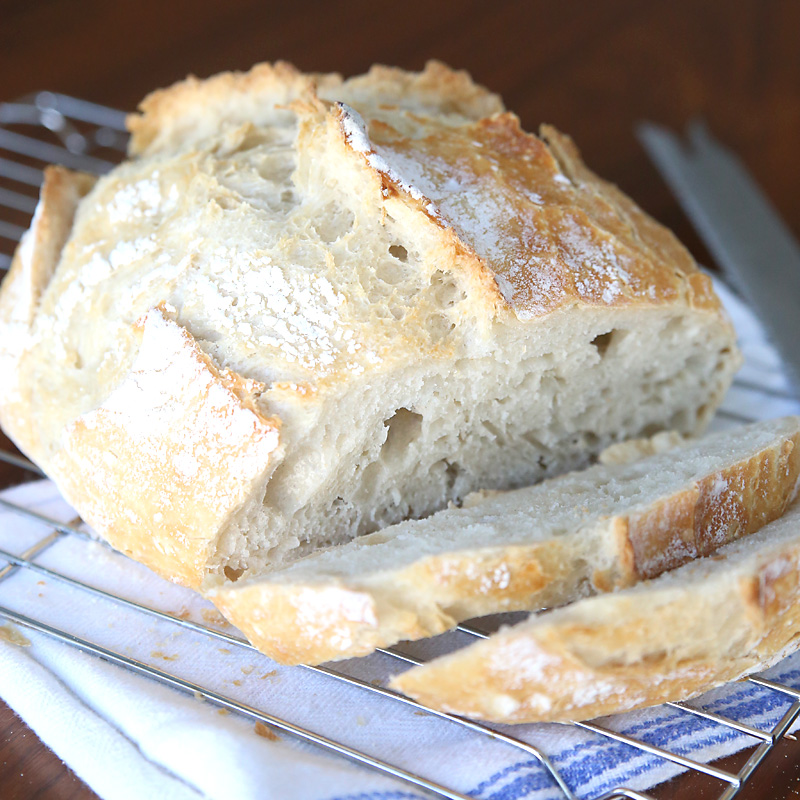
I like to let it cool for at least 15 minutes before I slice it so it doesn’t squish. If you have an electric knife you may be able to cut it sooner; and if you don’t have a sharp serrated knife you might want to wait even longer. It’ll be worth it, I promise!
ARTISAN BREAD RECIPE
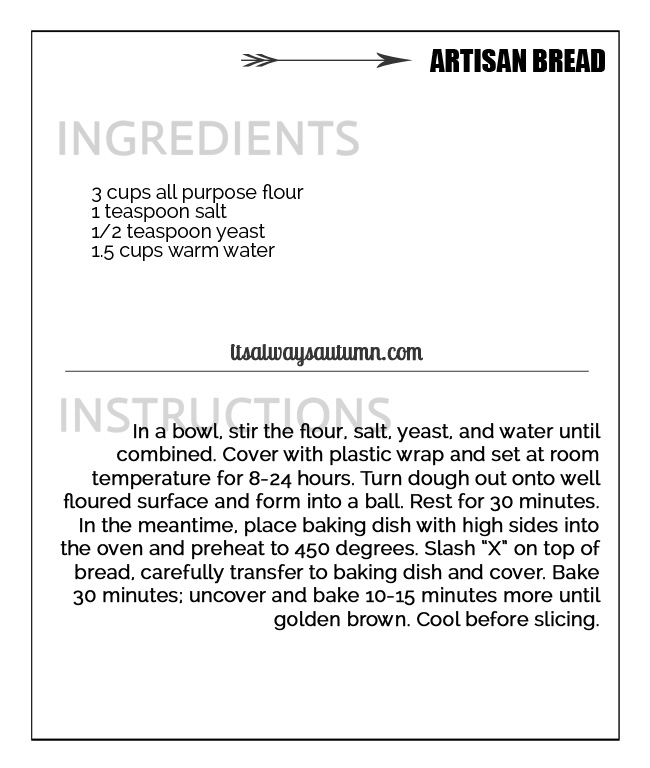 ARTISAN BREAD FAQ
ARTISAN BREAD FAQ*******YOUR QUESTIONS ANSWERED**********
Ok, I’ve gotten quite a few questions on this post, so I’ll answer them here. Watching the instructional video in the post above should be very helpful!
Can I make this bread with all whole wheat flour? No. And yes. If you just substitute whole wheat flour for the white flour in this recipe, you’ll end up with a very dense loaf. However, I now have a post on how to adjust the recipe for a great 100% whole wheat version here.
Is the first rise 8 hours? or 24? The first rise can be anywhere between 8 and 24 hours, at your convenience. That being said, I think the bread ends up a bit better if you go longer than 12.
The dough just sits on the counter for that long? Yep.
My dough rose for a while then fell before I shaped it. Will it still work? Yep.
After the first rise my dough is so runny that it won’t hold it’s shape at all. What’s wrong?Well, the dough will be very soft, as you can see in the video, but you should be able to quickly pull up the edges and form it into a soft ball. If you can’t even do that, then maybe you didn’t have enough flour to begin with.
Do I need bread flour? No. All purpose flour works great.
Can I skip the yeast and use self-rising flour? No.
Can I add other ingredients to this loaf, like cheese, garlic, or olives? Sure, although you’ll need to experiment and I cannot assure you it will work. Sometimes crushed garlic interferes with the yeast and the loaf doesn’t rise as high, and sometimes adding cheese makes the loaf a little moist. I don’t have a recipe for any add-ins, but you should check the comments because some people have left tips there.
Can I make this with gluten free flour? I have no idea, since I’ve never cooked with gluten-free flour. However, check the comments because some readers have left tips there.
Do I need to grease my baking dish? How do I do that if it’s already hot? Many baking dishes actually won’t need to be greased since they are already hot when you put the dough in. However, yours might, and the only way to find out is to try it. So I recommend shooting your baking dish with a quick shot of nonstick spray before adding the dough.
For more questions, please read through the comments because lots of readers have answered each other’s queries there – thanks!
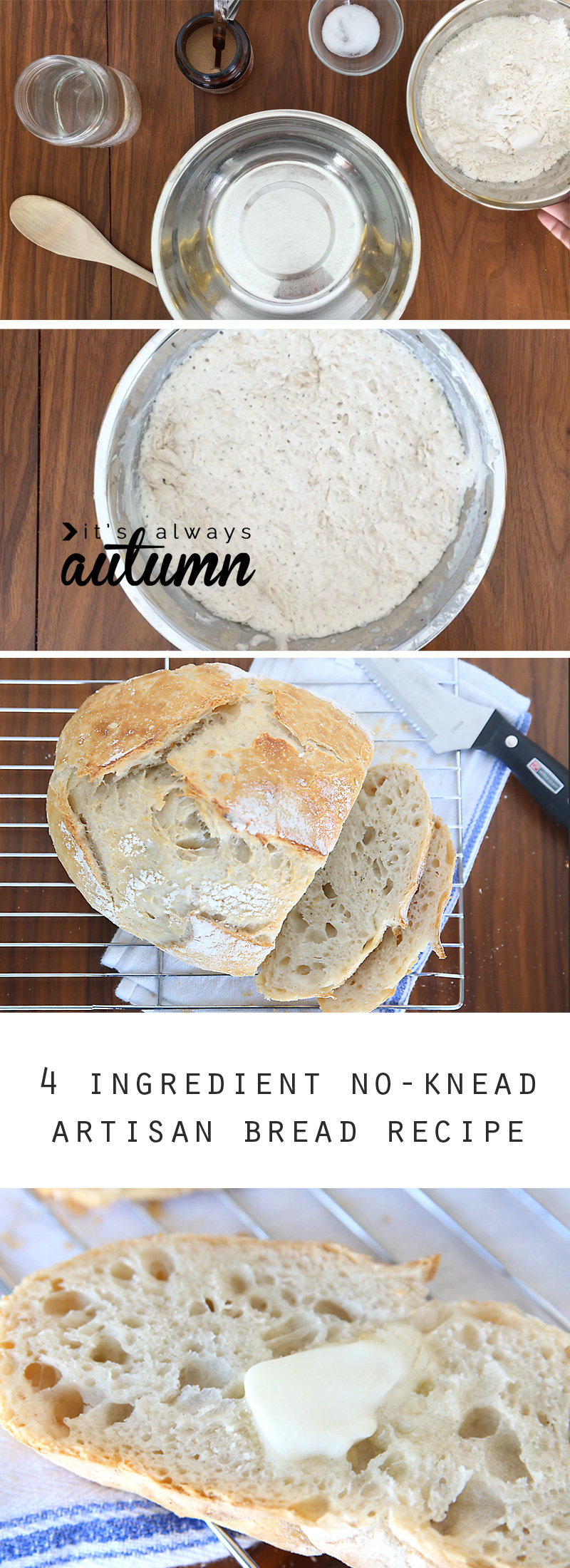
recipe source : https://www.itsalwaysautumn.com/homemade-artisan-bread-easiest-bread-recipe-ever.html
BERITA LENGKAP DI HALAMAN BERIKUTNYA
Halaman Berikutnya